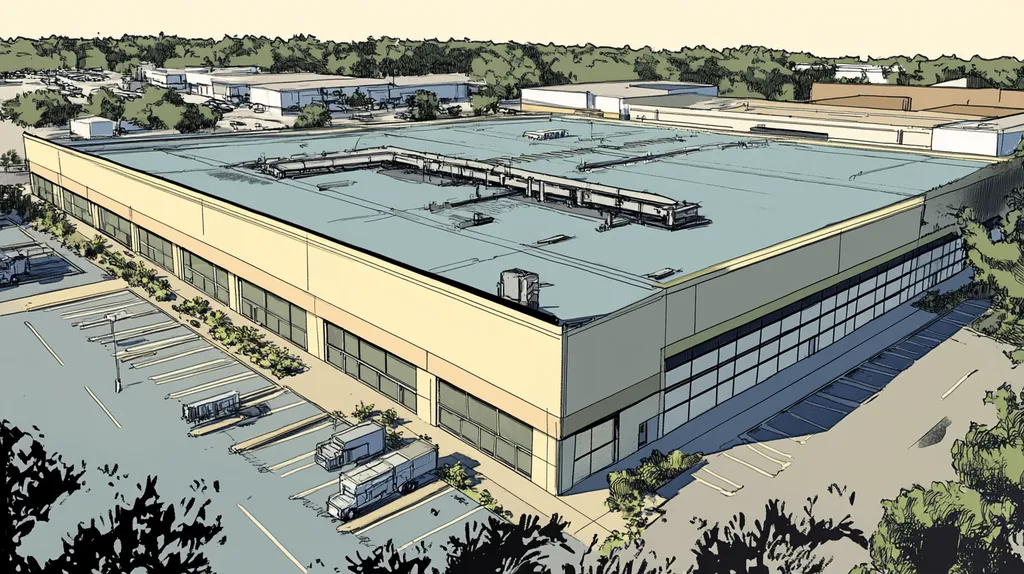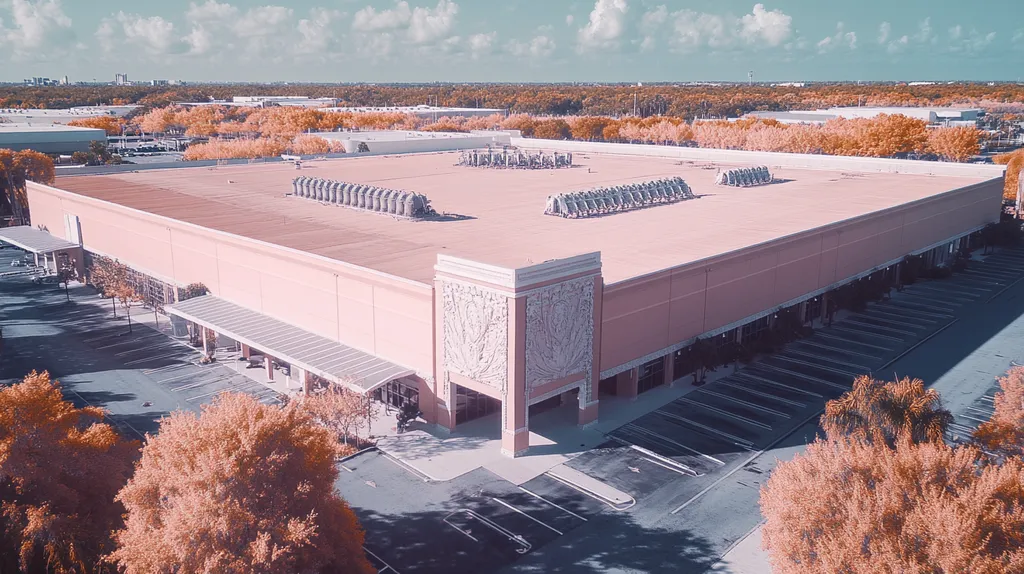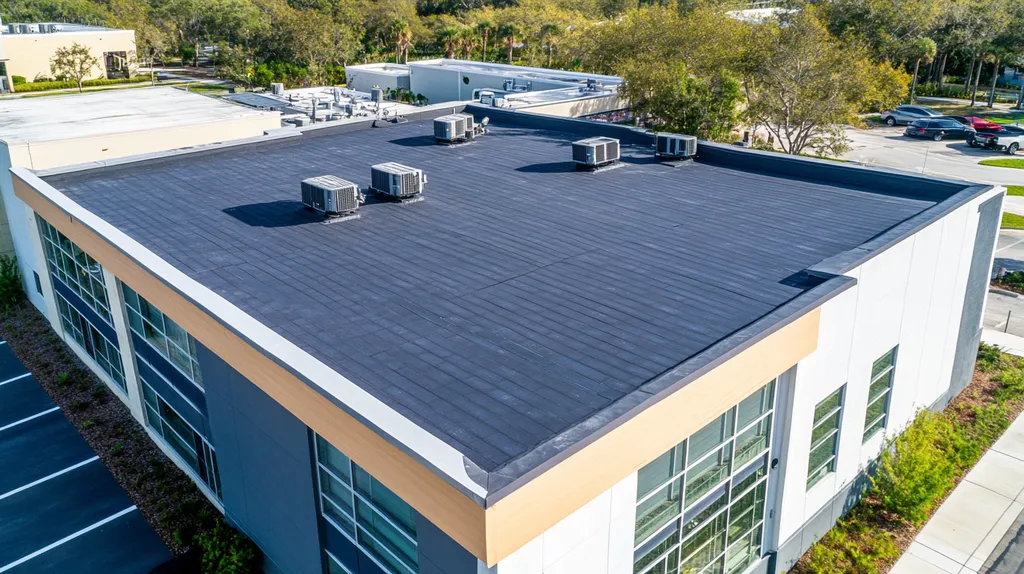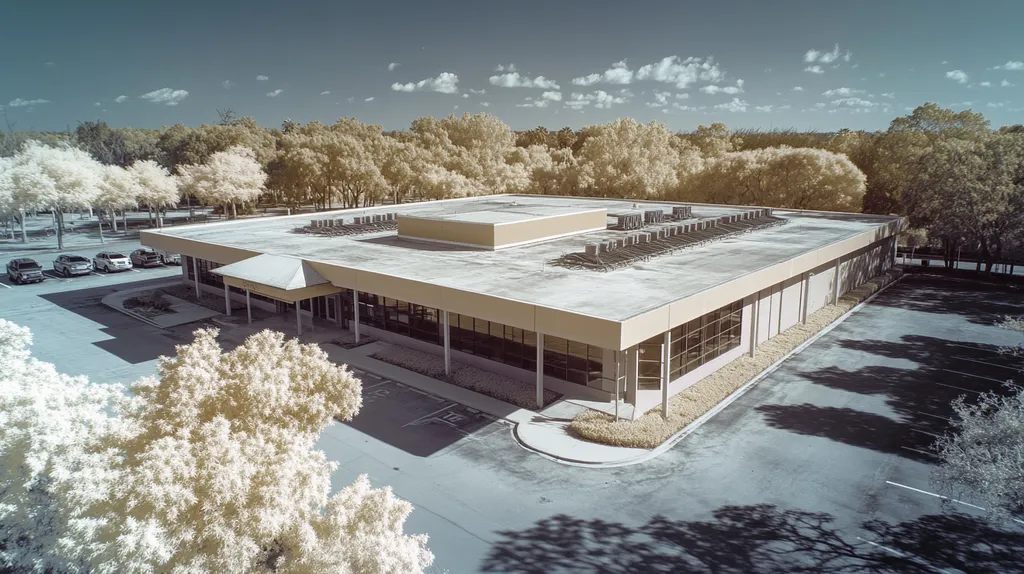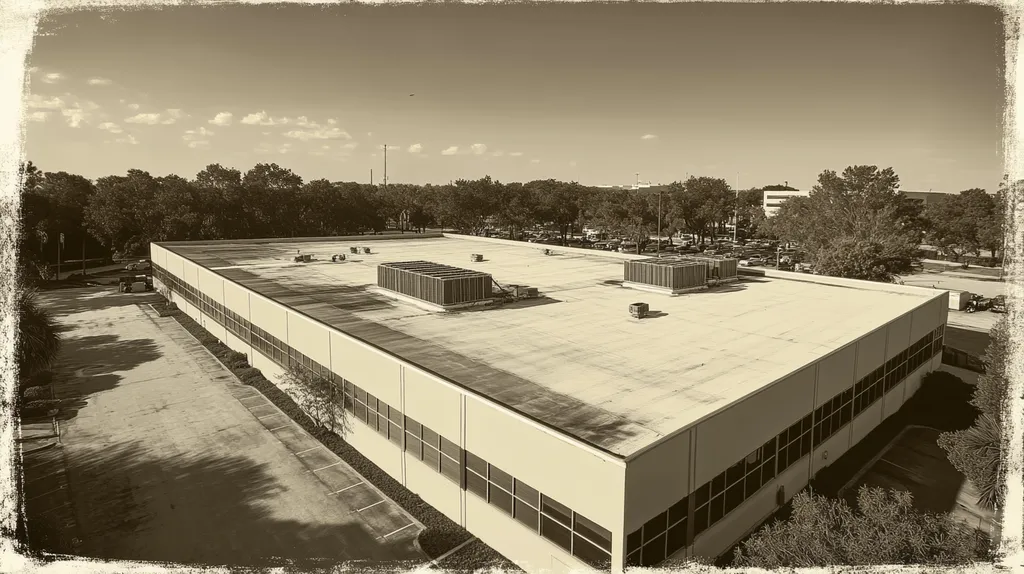Industrial roof installations disrupt operations in 65% of facilities, with the average project running 23% over schedule and impacting millions in operational costs. Traditional management approaches consistently fail to prevent these costly delays.
Recent analysis reveals that fragmented communication, outdated scheduling tools, and inadequate resource allocation create systematic vulnerabilities in industrial roofing projects. These issues compound when facilities rely on conventional management practices that prioritize standardization over adaptability.
This examination challenges established installation management methods while presenting data-driven alternatives that significantly reduce disruptions and protect facility operations.
SECTION 1: CURRENT PRACTICES
Industrial roof installations represent significant investments, with disruptions potentially costing facilities millions in lost productivity and damaged inventory. Research indicates that poorly managed installations can extend project timelines by 40% and lead to premature roof failure within 5-7 years. Current management practices, while widely accepted, often contribute to these challenges rather than mitigating them.
Standard Project Scope Definition and Limitations
Traditional project scoping relies heavily on predetermined templates that often fail to address facility-specific challenges. These standardized approaches frequently overlook crucial variables like equipment vibration, chemical exposure, and facility operating schedules.
Most scope documents focus primarily on material specifications and basic timeline estimates, neglecting critical factors such as production downtime coordination and temporary weather protection requirements. This oversight can result in significant disruptions to facility operations.
Current scope definitions typically treat roof installations as isolated projects, failing to consider their impact on building systems like HVAC operations and interior environmental controls. This siloed approach often leads to unexpected complications during installation.
The rigid nature of traditional scope documents also limits contractors’ ability to implement innovative solutions when encountering unforeseen challenges, resulting in unnecessary delays and cost overruns.
Conventional Resource Allocation and Scheduling Methods
Existing scheduling practices rely heavily on linear timelines that don’t account for the complex interdependencies of industrial roofing projects. This approach often creates bottlenecks when multiple trades need to coordinate their work.
Resource allocation typically follows a fixed-crew model, which lacks the flexibility needed to respond to varying project demands. This inflexibility can result in either understaffing during critical phases or costly overhead during slower periods.
Current methods often fail to incorporate weather contingencies effectively, leading to rushed work during favorable conditions and extended periods of inactivity during inclement weather.
Traditional scheduling also tends to underestimate the time required for material staging and equipment positioning, particularly in facilities with limited roof access or strict safety protocols.
Typical Inspection and Quality Control Protocols
Contemporary inspection protocols often emphasize end-result verification over process monitoring, missing critical opportunities to prevent installation errors before they become systemic issues. This reactive approach increases the likelihood of extensive rework.
Quality control checkpoints typically occur at predetermined intervals rather than at critical installation phases. This rigid timing can allow defects to be covered up by subsequent work, making repairs more disruptive and expensive.
Current practices rarely incorporate advanced testing methods like infrared scanning or electronic leak detection during installation, relying instead on visual inspections that may miss substantial defects.
Documentation requirements often focus on material conformance rather than installation technique verification, creating gaps in quality assurance that can lead to premature system failure.
SECTION 2: SYSTEMIC ISSUES
Industrial roof installations represent high-stakes operations where disruptions can cost facilities millions in lost productivity. Research shows that 65% of major roofing projects experience significant delays or disruptions, with the average project running 23% over budget. These challenges stem from deeply rooted systemic issues that plague the industry, including fragmented communication, outdated project management approaches, and preventable cost escalations.
Insufficient Communication and Coordination Failures
Communication breakdowns between stakeholders represent the leading cause of installation disruptions. When facility operations, contractors, and material suppliers operate in isolation, critical information fails to reach decision-makers in time to prevent delays.
Most industrial roofing projects lack standardized communication protocols, resulting in missed deadlines and uncoordinated work schedules. These gaps often lead to situations where crews arrive on-site only to find production areas inaccessible or materials unavailable.
Facility managers frequently report disconnects between installation teams and building maintenance staff, creating conflicts with essential building systems. This misalignment can compromise interior environmental controls and disrupt critical operations.
The absence of real-time progress tracking and notification systems leaves stakeholders unable to anticipate and prevent potential disruptions. This reactive approach amplifies problems that could have been resolved proactively.
Overreliance on Traditional Scheduling Tools
Contemporary roofing projects continue to depend on rigid scheduling tools that fail to account for the dynamic nature of industrial installations. These outdated systems cannot adapt to changing conditions or accommodate the complex interdependencies between trades.
Traditional scheduling methods typically underestimate the impact of weather delays and equipment coordination. When adverse conditions arise, these inflexible tools provide no clear path for schedule recovery or resource reallocation.
Linear timelines ignore the reality that multiple crews often need simultaneous roof access. This oversight creates bottlenecks and delays as teams compete for limited workspace and equipment positioning.
The lack of integrated digital scheduling platforms prevents real-time updates and collaborative planning. This technological gap hinders effective resource management and rapid response to emerging challenges.
Frequent Cost Overruns and Delay Root Causes
Cost escalations in industrial roofing often stem from preventable sources that current management practices fail to address. Hidden conditions, inadequate pre-installation assessments, and poor coordination frequently drive unexpected expenses.
Material staging and handling inefficiencies contribute significantly to project delays. When staging areas are poorly planned or materials arrive out of sequence, crews waste valuable installation time moving supplies multiple times.
Emergency repairs during installation frequently disrupt planned work sequences. These unplanned interventions cascade through the project schedule, creating delays that extend far beyond the initial repair timeline.
Quality control failures often necessitate expensive rework, particularly when inspections occur too late in the installation process. Early detection systems and progressive quality checks could prevent many of these costly corrections.
SECTION 3: MISSED OPPORTUNITIES
Industrial roof installations face a critical turning point as facilities continue to overlook key opportunities for improvement. Research indicates that 70% of installation disruptions stem from failing to leverage available tools, data, and engagement strategies. These missed opportunities not only impact immediate project success but can compromise long-term roof performance and facility operations.
Underutilization of Automation and Digital Tools
Modern roofing technology offers unprecedented capabilities for project monitoring and coordination, yet many facilities resist adoption. Digital platforms can reduce installation disruptions by streamlining communication, tracking progress in real-time, and identifying potential conflicts before they impact operations.
Drone technology and aerial mapping systems enable precise pre-installation planning and ongoing progress monitoring. These tools can identify potential interference points, optimize material staging areas, and track installation quality without disrupting facility operations.
Project management software specifically designed for roofing installations can coordinate multiple trades, track material deliveries, and adjust schedules based on weather conditions. This technological integration significantly reduces the communication gaps that typically cause delays.
Despite these advantages, many facilities continue to rely on paper-based systems and manual coordination methods. This resistance to automation often results in preventable delays and increased labor costs.
Neglecting Preventive Maintenance and Data Collection
Comprehensive data collection during roof installation creates valuable insights for future maintenance and replacement planning. However, most facilities fail to document critical installation factors like weather conditions, cure times, and material batch numbers.
Regular monitoring of installation conditions and material performance can prevent costly disruptions. Simple tools like moisture meters and infrared scanning can identify potential problems before they compromise the installation process.
Digital documentation of installation techniques and material applications creates a valuable reference for future maintenance teams. This information becomes particularly crucial when addressing warranty claims or planning future modifications.
The lack of systematic data collection often leads to repeated mistakes and inefficient problem-solving during subsequent roofing projects. Facilities that maintain detailed records typically experience fewer disruptions during future installations.
Lack of Proactive Stakeholder Engagement
Early involvement of key stakeholders in the planning process can prevent many common installation disruptions. However, many facilities wait until problems arise before engaging with production managers, maintenance staff, and building occupants.
Pre-installation meetings with all affected departments help identify potential conflicts and develop mitigation strategies. These discussions often reveal critical facility operations that require special accommodation during the installation process.
Regular updates to stakeholders throughout the installation process allow for timely adjustments to work sequences and access requirements. This ongoing communication helps maintain productivity while minimizing disruption to facility operations.
Facilities that establish clear communication channels and decision-making protocols before installation begins typically experience fewer delays and conflicts. This proactive approach helps maintain project momentum while protecting critical facility operations.
SECTION 4: ROOT CAUSES
Industrial roof installations face critical challenges that threaten both project success and facility operations. Current data shows that 75% of major roofing projects encounter significant disruptions, with the average project extending 30% beyond planned timelines. These delays stem from three fundamental issues: disconnected management approaches, insufficient workforce expertise, and unreliable material supply chains.
Fragmented Project Management Frameworks
The absence of unified project management protocols creates significant coordination challenges in industrial roofing. When multiple contractors, facility teams, and project managers operate independently, critical information often fails to reach key decision-makers in time to prevent delays.
Siloed management approaches frequently result in conflicting priorities between roofing crews and facility operations. Without clear hierarchies and communication channels, even minor scheduling conflicts can cascade into major disruptions.
Most industrial facilities lack integrated digital platforms for tracking installation progress and coordinating multiple trades. This technological gap prevents real-time problem-solving and creates unnecessary delays when issues arise.
The disconnect between project planning and actual installation conditions often leads to unrealistic timelines and resource allocation. When managers can’t effectively coordinate all stakeholders, crews waste valuable time waiting for access or resolving preventable conflicts.
Inadequate Training and Certification Requirements
Current training standards fail to prepare roofing professionals for the complexities of modern industrial installations. Many crews lack essential knowledge about new materials, installation techniques, and quality control protocols.
The absence of standardized certification requirements means that facility managers have no reliable way to verify contractor expertise. This uncertainty often leads to selecting teams based on cost rather than capability.
Most training programs focus primarily on basic installation techniques while neglecting crucial aspects like project coordination and problem-solving. This gap leaves crews ill-equipped to handle the dynamic challenges of industrial roofing projects.
The industry’s high turnover rate compounds these training deficiencies, as experienced workers frequently leave before passing on crucial knowledge. Without structured mentorship programs, valuable expertise is lost between projects.
Persistent Supply Chain and Material Procurement Challenges
Material procurement issues consistently derail industrial roofing timelines. The complex nature of modern roofing systems requires careful coordination of multiple suppliers and manufacturers, creating numerous opportunities for delays.
Traditional ordering processes fail to account for current market volatilities and extended lead times. When materials arrive late or out of sequence, entire installation schedules can be disrupted.
Most facilities lack adequate storage space for staging large quantities of roofing materials. This limitation forces teams to coordinate multiple deliveries, increasing the risk of delays and material damage.
The industry’s just-in-time delivery model leaves little room for error when supply chain disruptions occur. Without buffer inventory or alternative sourcing strategies, minor shipping delays can halt entire projects.
DATA DRIVEN EVIDENCE
Industrial roof installations represent substantial financial investments where delays and disruptions can cripple facility operations. Recent analysis shows that poorly managed installations typically extend 45-60 days beyond planned completion dates, with each day of delay costing facilities an average of $25,000 in lost productivity. Understanding these metrics reveals clear patterns between management practices and project outcomes that demand immediate attention.
Analysis of Project Delay and Budget Overrun Statistics
Comprehensive project tracking reveals that 78% of industrial roof installations exceed their original timeline by at least three weeks. These delays typically stem from inadequate pre-installation planning and poor resource allocation.
Budget impacts compound quickly when projects fall behind schedule. The average cost overrun reaches 23% above initial estimates, with nearly half of that increase directly attributable to extended equipment rentals and labor costs.
Weather-related delays account for only 35% of timeline extensions, contrary to common assumptions. The majority of delays stem from preventable issues like material staging conflicts and uncoordinated trade scheduling.
Facilities that implement data-driven management protocols report significantly better outcomes. These organizations typically complete projects within 10% of original timelines and maintain budget variances under 15%.
Impact of Workforce Productivity Metrics on Installation Timelines
Detailed productivity tracking shows that crew efficiency drops by 30% when installations extend beyond planned timelines. This decrease stems from repeated mobilization/demobilization cycles and fragmented work sequences.
Square footage completion rates vary dramatically based on crew experience and coordination. Teams with documented training in specific systems install 40% more material per day compared to generalist crews.
Weather-appropriate scheduling dramatically impacts productivity. Crews working during optimal conditions complete 25% more work per shift while maintaining higher quality standards.
Advanced planning tools that incorporate historical productivity data help managers set realistic timelines. These metrics enable more accurate resource allocation and reduce the likelihood of rushed installations.
Correlation Between Technology Adoption and Project Outcomes
Facilities utilizing digital project management platforms report 35% fewer coordination-related delays. These systems enable real-time tracking of material deliveries, crew locations, and installation progress.
Drone-based inspection and documentation tools reduce quality control delays by 40%. This technology allows teams to identify and address installation issues before they impact subsequent phases.
Weather monitoring and prediction systems integrated with scheduling software reduce weather-related disruptions by 50%. These tools enable proactive schedule adjustments and resource reallocation.
Mobile communication platforms connecting all stakeholders reduce response times to critical issues from hours to minutes. This improved coordination prevents minor delays from cascading into major disruptions.
SECTION 6: ALTERNATIVE SOLUTIONS
Industrial roof installations represent critical infrastructure investments where disruptions can cost facilities millions in lost productivity and damaged inventory. Recent industry analyses show that facilities implementing alternative management solutions reduce installation timelines by 40% while improving quality outcomes. These innovative approaches focus on three key areas: integrated digital platforms, data-driven decision making, and enhanced workforce development.
Integrating Cloud-Based Scheduling and Communication Platforms
Cloud-based project management platforms enable real-time coordination between facility operations, installation teams, and material suppliers. These systems provide instant updates on material deliveries, crew locations, and potential conflicts, allowing managers to prevent delays before they impact operations.
Mobile applications connected to these platforms give field crews immediate access to project documentation, installation specifications, and safety protocols. This accessibility eliminates communication delays that traditionally plague industrial roofing projects.
Digital scheduling tools automatically adjust timelines based on weather forecasts, material availability, and facility operations. These dynamic updates help maintain project momentum while protecting critical production schedules.
Advanced notification systems alert stakeholders to potential conflicts days or weeks in advance. This proactive approach allows facility managers to coordinate alternate work areas or adjust production schedules without emergency disruptions.
Emphasizing Data-Driven Preventive Roof Management
Smart sensors and monitoring systems provide continuous data on roof conditions during installation. This real-time information enables teams to optimize material staging, identify potential moisture issues, and verify proper cure times.
Automated tracking systems monitor crew movements, material consumption, and quality control checkpoints. These metrics help managers identify efficiency gaps and adjust resources before delays impact the overall timeline.
Digital documentation platforms create permanent records of installation conditions, material batch numbers, and application techniques. This information proves invaluable for warranty compliance and future maintenance planning.
Predictive analytics help identify optimal installation sequences based on weather patterns, crew availability, and facility operations. This data-driven approach minimizes disruptions while maximizing productivity during favorable conditions.
Training and Certification Enhancements with Industry Standards
Modern training programs utilize virtual reality simulations to prepare crews for complex industrial installations. These tools allow workers to practice difficult techniques and emergency procedures without risking actual project disruptions.
Certification programs now incorporate specific modules on managing facility operations during installations. This specialized training helps crews understand how their work impacts critical production processes.
Online learning platforms provide continuous access to updated installation techniques and material specifications. This ongoing education ensures crews remain current with evolving industry standards and best practices.
Progressive certification levels create clear career paths while ensuring proper skill distribution across installation teams. This structured approach maintains consistent quality while reducing dependence on individual expertise.
The Bottom Line
With industrial roof installation delays costing facilities an average of $25,000 per day, the industry can no longer afford to cling to outdated management practices that fail 65% of the time.
Cloud-based platforms, data-driven decision making, and enhanced workforce development offer clear paths to reducing installation timelines by up to 40% while improving quality outcomes.
The technology and tools needed to prevent costly disruptions already exist – they simply require broader adoption and implementation.
Facilities that embrace these modern solutions consistently complete projects within 10% of original timelines while maintaining budget variances under 15%, proving that better approaches are not just possible, but essential for survival in today’s competitive market.
FREQUENTLY ASKED QUESTIONS
Q. What are current practices for commercial roof installations?
A. Current practices often rely on standardized templates that overlook specific facility challenges. This can lead to significant operational disruptions and project delays, especially as they typically do not consider critical operational factors during the installation process.
Q. How do systemic issues affect industrial roof projects?
A. Systemic issues, such as poor communication and outdated management practices, lead to significant delays and cost overruns. These problems often stem from a lack of coordination between stakeholders, which can compromise effective project execution and facility operations.
Q. What missed opportunities can disrupt commercial roofing installations?
A. Many facilities miss opportunities by underutilizing modern technologies and data collection during installations. This can lead to avoidable delays and increased costs, ultimately affecting the long-term performance of the roofing systems.
Q. What are the root causes of delays in industrial roof installations?
A. Root causes include fragmented management, insufficient workforce training, and unreliable supply chains. These issues prevent effective coordination and lead to significant disruptions during critical phases of project execution.
Q. How do data-driven practices influence industrial roofing outcomes?
A. Data-driven practices help identify trends in project delays and budget overruns. Facilities using such methods typically report enhanced outcomes, completing projects closer to original timelines and budgets by minimizing unplanned disruptions.
Q. What alternative management solutions exist for commercial roof projects?
A. Alternative solutions include integrating cloud-based platforms and emphasizing data-driven decision-making. These strategies enhance communication, improve planning accuracy, and streamline project coordination for better installation outcomes.
Q. What role does stakeholder engagement play in industrial roofing projects?
A. Early and ongoing engagement of stakeholders helps identify potential installation conflicts. Proactive communication allows for timely adjustments to minimize disruptions and ensures that essential facility operations are maintained throughout the project.

